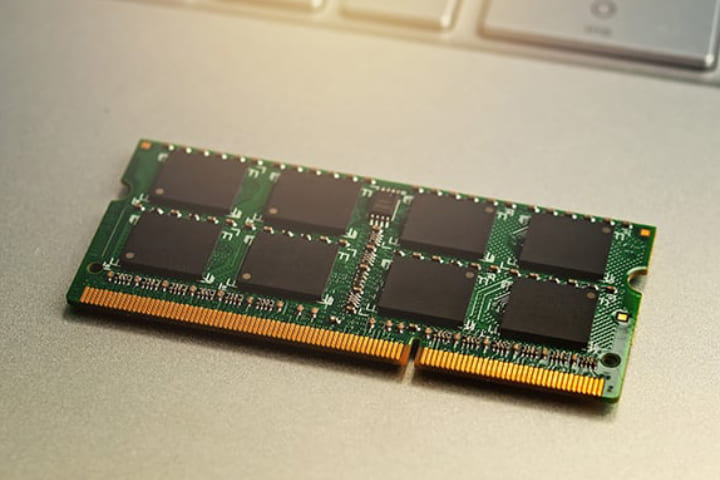On Windows 10, you can check the RAM type (DDR3 or DDR4) using the built-in system information tool. Here’s how to do it:
How to Check RAM Type in Windows 10
Using Windows Settings
- Press the “Windows key + I,” then Windows Settings will open.
- Click on “System.”
- In the left sidebar, scroll down and click on “About.”
- Look for the “Device specifications” section on the right side of the window.
- Under “Device specifications,” you’ll find the “Installed RAM” information, which includes the RAM type (e.g., DDR3, DDR4).
With System Information (msinfo32)
- Press the “Windows key + R” to open the Run dialog box.
- Type “msinfo32” (without quotes) and press Enter. It will open the System Information window.
- Look for the “System Summary” section on the left panel in the System Information window.
- Under “System Summary,” search for “Memory Type.” The value next to it will indicate your RAM type (e.g., DDR3, DDR4).
Here is about Error Code 0x0 0x0 on Windows
Using Command Prompt
- Press “Windows key + R” to open the Run dialog box.
- Type cmd and press Enter. It will open the Command Prompt.
- In the Command Prompt, type the following command and press the Enter

- The output will show the memory type for each RAM module installed on your system. “21” indicates DDR3, and “26” means DDR4.
Please note that the values mentioned above (e.g., “21” for DDR3 and “26” for DDR4) are specific to Windows WMI (Windows Management Instrumentation) and may not be explicitly labeled as DDR3 or DDR4. However, you can quickly determine the RAM type by cross-referencing the WMI values with the technical specifications of DDR3 and DDR4.
On macOS
- Click the Apple menu in the top-left corner.
- Select “About This Mac.”
- In the Overview tab, you’ll see information about your Mac, including the installed memory (RAM) type.
On Linux
- Open a terminal window.
- In Command Promot or Terminal, type the following command and press Enter.

- This will display detailed information about your system’s memory, including the RAM type.
Please note that some methods may require administrative privileges (e.g., using “sudo” on Linux) to access detailed system information. Additionally, the displayed memory type will be in numeric codes (e.g., “21” for DDR3, “26” for DDR4), so you may need to cross-reference the code with the DDR3 and DDR4 specifications to identify the RAM type.
What are the Differences Between DDR3 and DDR4?
DDR3 and DDR4 are different generations of RAM (Random Access Memory) technology, each offering improvements over the previous one. Here are the main differences between DDR3 and DDR4:
Speed and Bandwidth
DDR4 operates at higher clock speeds than DDR3, increasing data transfer rates. DDR3 typically ranges from 800 to 2133 MHz, while DDR4 starts from 2133 MHz and can go up to 3200 MHz or higher. This increase in speed allows DDR4 to deliver higher bandwidth, meaning it can transfer more data in a given amount of time.
Voltage
DDR4 operates at a lower voltage than DDR3, making it more power-efficient. DDR3 modules typically run at 1.5V, while DDR4 modules run at 1.2V. This reduction in voltage contributes to better energy efficiency and can help extend the battery life of laptops and other mobile devices.
Density and Capacity
DDR4 allows for higher memory module density and capacity than DDR3. With DDR4, you can find modules with more extensive capabilities, such as 16GB or 32GB, which provide more room for applications and multitasking.
Latency
DDR4 generally has higher CAS (Column Address Strobe) latencies compared to DDR3, but due to its higher clock speeds, the overall transfer time is still improved. While DDR3 has lower CAS latencies, DDR4 can perform more operations per second due to its higher clock speed, resulting in better overall performance.
Compatibility
DDR3 and DDR4 are not compatible with each other. They use different physical connectors and have additional memory module slot configurations on motherboards. To use DDR4, you need a compatible motherboard that supports DDR4 memory.
Cost
DDR4 initially had a higher price than DDR3 due to its newer technology and manufacturing process. However, as time passes and manufacturing becomes more efficient, the cost difference has decreased, making DDR4 more accessible.
Future-proofing
DDR4 is the more recent and future-proof option. As newer processors and motherboards are released, they will likely support DDR4 memory, while DDR3 support becomes less common.
In summary, DDR4 offers higher performance, lower power consumption, and larger capacities than DDR3. However, to use DDR4, you need a compatible motherboard and processor. If you have a system that supports DDR4, it is recommended to opt for DDR4 memory for better overall performance and future compatibility.
How does my Motherboard Support DDR4?
To determine if your motherboard supports DDR4 memory, you can follow these steps:
Check the Motherboard Specifications
The easiest and most reliable way to determine if your motherboard supports DDR4 memory is to check its specifications. Find the specifications in the user manual that came with your motherboard, or visit the manufacturer’s website and look up your motherboard model.
Identify the Motherboard Model
If you don’t know the model of your motherboard, you can find it in various ways:
Check the motherboard
The model name is usually printed on the motherboard, often near the CPU socket or along the board’s edge.
Use system information tools
You can use the “msinfo32” utility (as explained in a previous answer) or third-party system information software to identify your motherboard model on Windows.
Look for DDR4 Support in Specifications
Once you have identified your motherboard model, search for its specifications on the manufacturer’s website. Look for information related to memory support. If your motherboard supports DDR4 memory, it will be explicitly mentioned in the specifications, along with the supported memory speeds and capacities.
Check the Memory Slots
Physically inspect the memory slots on your motherboard. DDR4 memory slots have 288 pins, whereas DDR3 slots have 240 pins. If your motherboard has 288-pin slots, it supports DDR4. However, this method might not be foolproof, as some motherboards may have a mix of DDR3 and DDR4 slots.
Check the BIOS/UEFI Settings
If your computer is already running, check the BIOS/UEFI settings for memory-related information. Restart the PC and enter the BIOS/UEFI by pressing a specific key (usually Del, F2, F10, or Esc) during the boot process. Once inside the BIOS/UEFI, navigate to the memory settings or information section. There, you should see details about the installed memory and whether it is DDR3 or DDR4.
Remember that if your motherboard supports DDR4, you must install DDR4 memory modules to take advantage of its benefits. Mixing DDR3 and DDR4 memory is not recommended, as they are incompatible and can cause system instability or damage. Always use memory that matches the type (DDR3 or DDR4) supported by your motherboard.
Can I Upgrade my Motherboard to Support DDR4?
In most cases, upgrading your motherboard to support DDR4 memory is impossible. Motherboard compatibility with DDR3 or DDR4 memory is determined by the physical design of the memory slots and the underlying memory controller on the motherboard.
DDR3 and DDR4 memory modules have different pin configurations and voltage requirements and are not interchangeable. DDR4 memory modules require an additional memory slot design with 288 pins, while DDR3 modules have 240 pins. Attempting to insert a DDR4 module into a DDR3 slot or vice versa will not work, and it may even damage the memory module or the motherboard.
Since the memory slots and controller are fixed components on the motherboard, upgrading to support DDR4 memory would require replacing the motherboard with one that specifically supports DDR4. It usually means getting a new motherboard compatible with your existing processor and other components, such as the CPU socket type and other peripherals.
Upgrading the motherboard is a significant undertaking, and it may also require reinstallation of the operating system and drivers, among other considerations. Therefore, it’s essential to carefully research and plan the upgrade before proceeding.
If you wish to use DDR4 memory, you must check if your existing motherboard supports DDR4 or consider purchasing a new one that supports DDR4 memory and is compatible with your current processor and other components. Always ensure that you verify compatibility before making any hardware upgrades.
What are the Benefits of DDR4 over DDR3?
DDR4 offers several benefits over DDR3, making it a significant advancement in memory technology. Here are the key benefits of DDR4 over DDR3:
Higher Data Transfer Rates
DDR4 operates at higher clock speeds, increasing data transfer rates. DDR3 typically ranges from 800 to 2133 MHz, while DDR4 starts at 2133 MHz and can go up to 3200 MHz or higher. This higher speed results in faster data access and improved overall system performance.
Increased Bandwidth
With higher clock speeds and improved data transfer rates, DDR4 provides greater bandwidth than DDR3. More data can be accessed and transferred within a given time, allowing for better multitasking and handling larger datasets.
Lower Power Consumption
DDR4 operates at a lower voltage than DDR3. DDR3 modules typically run at 1.5V, while DDR4 modules run at 1.2V. This reduction in voltage leads to improved energy efficiency, which can result in lower power consumption and better battery life, especially in laptops and other mobile devices.
Larger Memory Capacities
DDR4 allows for higher memory module density and capacity than DDR3. DDR3 modules are commonly available in capacities of up to 8GB per module, while DDR4 modules can be found in degrees up to 32GB or more. Its increased capacity benefits memory-intensive tasks like video editing and content creation.
Improved Signal Integrity
DDR4 memory modules have improved signal integrity and a more robust design. It helps reduce the likelihood of data errors and improves system stability, especially when using higher clock speeds.
Higher Future Compatibility
As newer processors and motherboards are released, they are more likely to support DDR4 memory, while DDR3 support becomes less common. Choosing DDR4 can ensure better future compatibility with upcoming hardware releases.
Better Overall Performance
The combination of higher clock speeds, increased bandwidth, and lower power consumption results in better overall system performance with DDR4 memory than DDR3—systems with DDR4 memory experience faster application loading times, smoother multitasking, and improved responsiveness.
Improved Data Integrity and Error Correction
DDR4 introduces improved error correction capabilities, such as ECC (Error-Correcting Code) and other features, which enhance data integrity and reduce the chances of data corruption during data transmission and storage.
In summary, DDR4 memory offers faster data transfer rates, higher bandwidth, lower power consumption, increased memory capacities, and better future compatibility compared to DDR3. These benefits make DDR4 a more attractive choice for modern systems, especially for tasks that require high-performance memory and handling large amounts of data.








